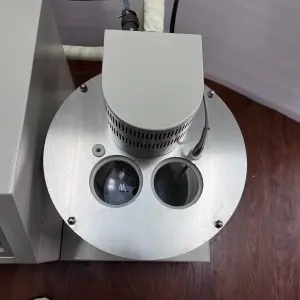In the realm of fluid dynamics and quality control, measuring the viscosity of fluids is crucial for various industrial applications. Kinematic viscosity tester, also known as kinematic viscometer, play a vital role in determining the kinematic viscosity of fluids.
Understanding Kinematic Viscosity:

Kinematic viscosity is a measure of a fluid’s resistance to flow under gravity. It is defined as the ratio of the dynamic viscosity to the density of the fluid and is expressed in units of stokes (St) or centistokes (cSt).
Types of Kinematic Viscosity Testers:
There are two main types of kinematic viscosity testers:
- Capillary Viscometers: Capillary viscometers utilize a capillary tube to measure the time it takes for a fluid to flow through a specific distance under gravity. The kinematic viscosity is calculated using the measured flow time and the dimensions of the capillary tube.
- Falling Ball Viscometers: Falling ball viscometers measure the time it takes for a ball to fall through a fluid-filled tube. The kinematic viscosity is calculated using the measured fall time, the ball’s density, and the dimensions of the tube.
Factors Affecting Kinematic Viscosity Measurements:
- Temperature: Viscosity is highly dependent on temperature. Kinematic viscosity apparatus are designed to maintain precise temperature control to ensure accurate measurements.
- Fluid Density: The density of the fluid affects the kinematic viscosity measurement. Corrections may be necessary for fluids with densities significantly different from water.
- Sample Preparation: Proper sample preparation is essential to obtain accurate results. Factors such as degassing, filtration, and temperature equilibration should be considered.
Applications of Kinematic Viscosity Testers:
Kinematic viscosity testers find application in a wide range of industries, including:
- Petroleum and Petrochemicals: Viscosity measurements are critical for characterizing and classifying petroleum products, such as oils and fuels.
- Lubricants: The viscosity of lubricants is crucial for ensuring proper lubrication and wear protection in machinery.
- Paints and Coatings: Viscosity plays a vital role in determining the application properties and performance of paints and coatings.
- Food and Beverage: Viscosity measurements are important for quality control and process optimization in the food and beverage industry.
- Pharmaceuticals: Viscosity testing is essential for ensuring the stability, efficacy, and safety of pharmaceutical products.